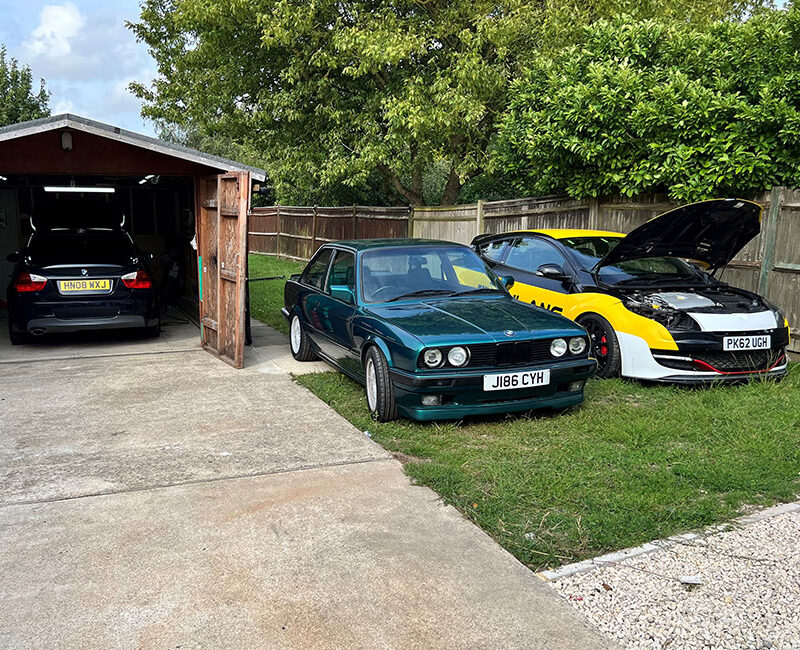DIY Guide: Hands-On Tips for Building Your Track Car
Building a track car is a rewarding project for any motorsport enthusiast. It’s an opportunity to tailor a vehicle to your specific needs and preferences for the track. This DIY guide provides practical, hands-on tips for building your track car, covering everything from planning and preparation to the nitty-gritty of modifications.
Planning and Preparation
- Set Clear Goals: Define what you want from your track car. Are you building for casual track days, time attack competitions, or another racing format? Your goals will dictate the types of modifications you’ll need.
- Research Thoroughly: Learn as much as you can about your car and the modifications you’re considering. Online forums, manufacturer guides, and motorsport books are invaluable resources.
- Create a Detailed Plan: List all the modifications you plan to make, including estimated costs and timeframes. Organise them in order of priority.
- Budget Wisely: Be realistic about what you can afford. Remember, the cost isn’t just in parts but also in tools, safety equipment, and possibly professional help for more complex tasks.
- Prepare Your Workspace: Ensure you have a clean, well-lit, and spacious area to work on your car. Good organisation of tools and parts will save time and frustration.
Essential Tools and Equipment
- Basic Tool Set: Wrenches, sockets, screwdrivers, pliers, and hammers are essentials.
- Specialised Tools: Depending on your modifications, you might need more specialised tools like torque wrenches, spring compressors, or a multimeter.
- Safety Gear: Safety glasses, gloves, and ear protection are vital. Also, invest in a good quality jack and stand for lifting and supporting the car.
Key Modification Areas
- Suspension: Upgrades like stiffer springs, performance shocks, and anti-roll bars can significantly improve handling. Alignment (camber, caster, toe adjustments) is also crucial.
- Brakes: High-performance brake pads, larger rotors, and braided brake lines are common upgrades. Remember to use high-temperature brake fluid.
- Engine: Start with simpler mods like cold air intakes or exhaust systems. ECU tuning can also yield performance gains but may require professional assistance.
- Safety: Install a roll cage or roll bar, racing seats, and harnesses. Ensure all safety equipment is properly mounted and meets racing standards.
- Weight Reduction: Remove unnecessary parts like rear seats, sound deadening, and non-essential interior components. However, keep structural integrity in mind.
- Aerodynamics: Simple aerodynamic mods like front splitters and rear spoilers can improve downforce and stability.
Practical Tips for the Build
- Take Your Time: Rushing can lead to mistakes. Allocate plenty of time for each task, especially if you’re learning as you go.
- Document Everything: Keep a detailed record of what you’ve done. This is invaluable for troubleshooting and future modifications.
- Test Regularly: After each significant modification, test drive your car in a safe, controlled environment to understand the impact of the changes.
- Seek Advice: Don’t hesitate to seek help from more experienced builders or online communities.
- Stay Organized: Keep track of all parts and tools. Label everything if you’re disassembling large sections of the car.
- Safety Checks: After any major work, double-check all connections, bolts, and fittings to ensure everything is secure.
FAQs for DIY Track Car Building
Q: What’s the most important modification for a track car? A: Safety upgrades should be your first priority, followed by brakes and suspension.
Q: How can I learn more about car mechanics and modifications? A: Automotive repair manuals, online tutorials, and community college courses are great resources.
Q: Can I build a track car from a regular street car? A: Absolutely. Many track enthusiasts start with a regular street car and progressively modify it for track use.
Q: How do I know if a modification is beyond my skill level? A: If a modification involves critical safety systems or complex engineering, it’s best left to professionals.
Q: Is it cheaper to build a track car or buy a pre-built one? A: Building a track car can sometimes be cheaper and allows for customizations, but it requires time and skill. Buying a pre-built car is quicker but potentially more expensive and less personalised.
In conclusion, building a track car is a substantial undertaking that can be incredibly fulfilling. With careful planning, thorough research, and a methodical approach, you can transform an ordinary vehicle into a track-ready machine. Remember, each modification should be a step towards creating a car that is safe, reliable, and exhilarating to drive on the track.

